New batches of equipment for the Russian army
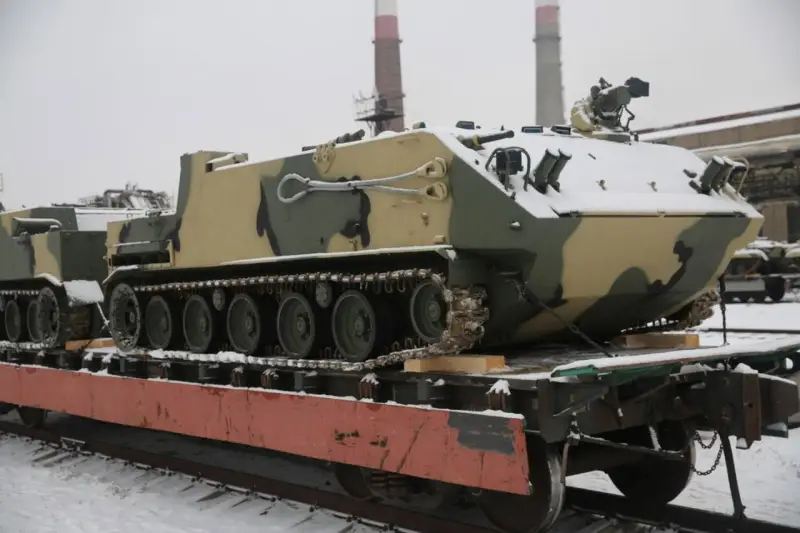
BTR-MDM, prepared for transportation
The Russian defense industry continues to fulfill orders from the Ministry of Defense and build various armored vehicles. In particular, recently the next batch of BMP-3 infantry fighting vehicles and newly built BTR-MDM armored personnel carriers were handed over to the customer. The annual plan for the supply of such equipment has been fulfilled, and the manufacturer continues to work so that the army can quickly receive the next combat vehicles.
Latest news
The latest successes in the construction of armored vehicles were reported on December 13 by the press services of the Kurgan Machine-Building Plant, the High-Precision Complexes holding company and the Rostec state corporation. It is reported about the transfer of a large batch of combat vehicles, the delivery of other products, as well as the development of production capacities in order to increase the output of certain products.
Kurganmashzavod writes about the shipment of a batch of BMP-3 infantry fighting vehicles and BTR-MDM armored personnel carriers. We are talking about the last vehicles built under government contracts for the end of 2023. Accordingly, the current government order has been successfully completed. The size of the latest batch, as well as the total volume of orders for this year, for obvious reasons, have not been specified.
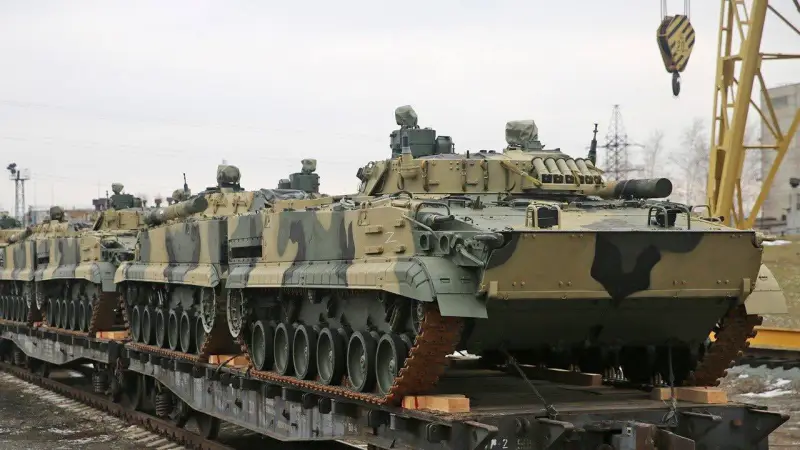
BMP-3 on a platform
The company is also involved in other projects and is successfully completing its part of the work. The successful fulfillment of obligations within the framework of the construction of BMP-2M combat vehicles with the Berezhok combat module is reported.
Interesting photos and videos were attached to the official message. The video shows the process of assembling armored vehicles and loading finished products onto railway platforms. The photo, in turn, shows two trains with combat vehicles, ready to be sent to the customer. About two dozen BMP-3s and several BTR-MDMs were simultaneously captured in the frame.
Having completed orders for 2023, Kurganmashzavod continues to work. The production of the next batch of combat vehicles has begun as part of the commitments for additional volumes. The enterprise is ready to provide all the needs of the Russian army in light armored vehicles for transporting personnel.
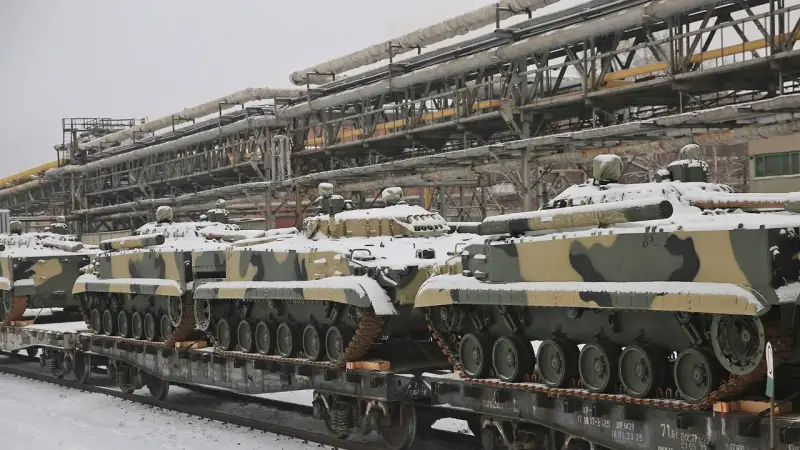
Rostec notes that Kurganmashzavod has recently significantly increased the pace of work and is showing great success. Thus, over an unspecified period, the production of armored vehicles increased several times. Back in September, the plant completed the current order for the repair of combat BMP-3s. To maintain and increase this pace, production facilities are being modernized and staffing is being expanded.
Infantry equipment
Kurganmashzavod mastered the production of BMP-3 infantry fighting vehicles in the mid-eighties, and soon began mass shipment of such equipment to the troops. Subsequently, production continued, although due to various factors its pace varied, and there were also minor interruptions. Despite all the difficulties, the troops managed to create a fairly large fleet of new vehicles and bring their share to the required values.
Production of the BMP-3 does not stop, but now it solves slightly different problems. First of all, new batches of equipment must compensate for the wear and loss of vehicles during the Special Operation. In addition, with their help the planned increase in the number of ground forces will be ensured. A significant part of the BMP-3s under construction or so far only ordered will go to newly formed units and subunits.
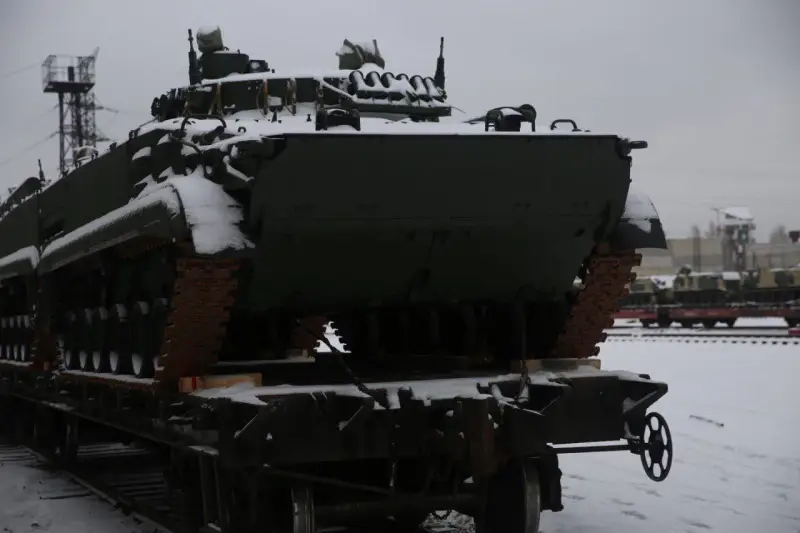
Despite its age, the BMP-3 still remains a convenient and effective model and is capable of solving all assigned tasks. At the same time, the need and possibility of modernization by replacing individual units and installing new devices is not excluded. As a result of this modernization, the BMP-3 will be able to remain in service for a long time, until the mass appearance of similar next-generation equipment.
It should be noted that the real potential of the BMP-3 depends not only on its design, but also on the characteristics of the enemy’s equipment fleet. Thus, during the current hostilities, the real potential of light and medium-sized foreign-made vehicles became known. In addition, it became possible to evaluate the ability of our BMP-3 and other equipment to fight them. In general, high combat performance and the ability to solve all expected combat missions were demonstrated.
The combat potential of the BMP-3 largely depends on the level of protection. The vehicle has spaced-out hull armor, providing protection from 30-mm shells from the front corners, as well as from bullets and shrapnel from other angles. It is also possible to install mounted screens to combat anti-tank weapons and improve ballistic protection. Experiments were carried out with the installation of dynamic and active protection.
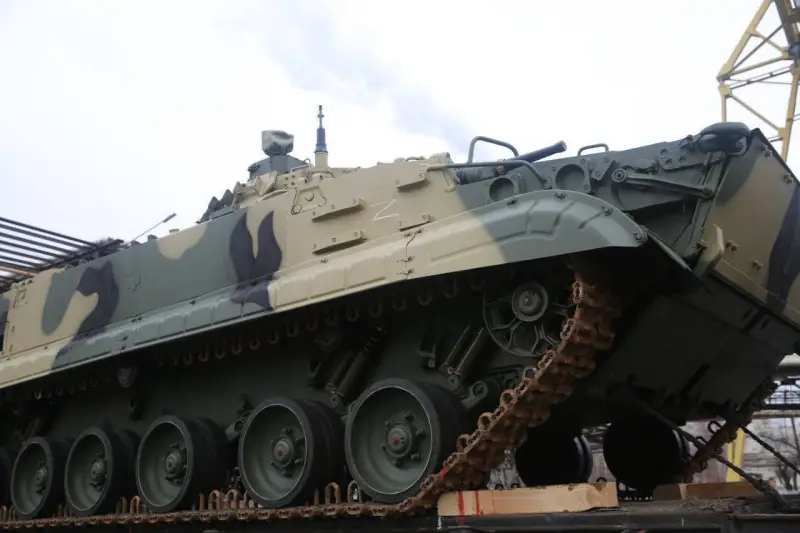
A characteristic feature of the BMP-3 is its weapon system with two cannons and several machine guns. The 100-mm gun-launcher 2A70 can use high-explosive fragmentation shells and guided missiles of the 9K116 “Kastet” complex with a flight range of up to 5,5 km and penetration of up to 600-750 mm of homogeneous armor. For targets with a lower level of protection, the 30-mm 2A72 cannon is intended, and manpower is attacked by three machine guns.
The BMP-3 has a combat weight of approx. 19 t (without additional protection) and is equipped with a 450 hp diesel engine. (660 hp in the modernized version). High specific power, tracked undercarriage and water cannons provide the necessary characteristics of mobility and cross-country ability, and also allow sailing (as standard).
Landing vehicle
In turn, the BTR-MDM “Rakushka” airborne armored personnel carrier is a fairly new model. It was developed at the beginning of the last decade and was adopted by the airborne troops in 2016. The goal of the project was to create a modern replacement for the older BTR-MD with an increase in all basic technical and operational characteristics.
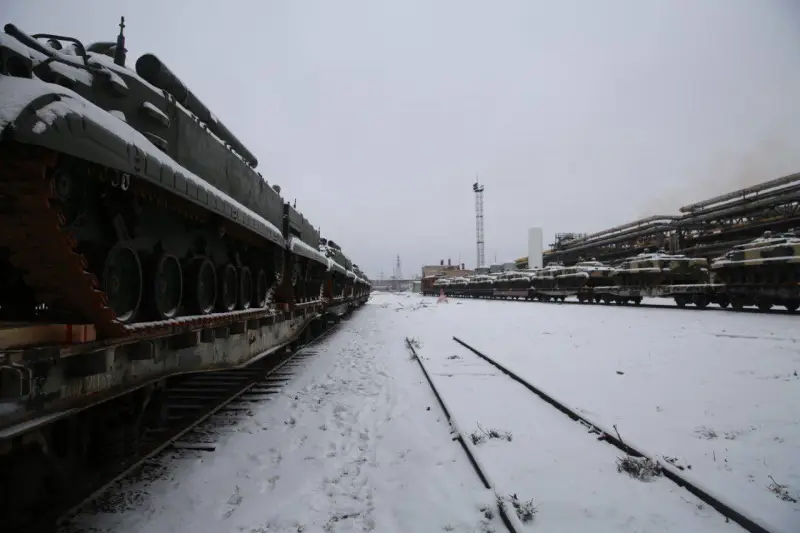
Production of the Shells began in the middle of the decade, shortly before its official adoption. Over the past time, Kurganmashzavod has transferred a large amount of such equipment to the army, which made it possible to completely re-equip some airborne formations and create the groundwork for a similar renewal of the fleet of other units. Now, these production tasks have also been supplemented by the need to replenish fleets due to the write-off of worn-out or damaged vehicles, as well as due to an increase in the number of troops.
BTR-MDM is intended for transportation of military transport aviation and parachute landing, which affected its dimensions and weight, as well as other characteristics. This vehicle has only bulletproof/fragmentation-proof armor, and the installation of additional protection is not provided. At the same time, high mobility on roads or terrain is ensured.
The “Shell” is standardly equipped with a mount for a normal or large caliber machine gun. Embrasures for firing from personal weapons from under armor are not provided. In this case, various improvised solutions are possible with the installation of other weapons available to the Airborne Forces. In particular, the BTR-MDM can be a carrier of anti-tank systems, provide mobility for mortar men, etc.
Challenges and responses
Last year, for objective reasons, the needs of our armed forces for military and special equipment, weapons, etc. have grown noticeably. The domestic defense industry was ready for this and was able to increase the rate of production of the necessary products within a reasonable time. In addition, it managed to master a number of new areas and classes of products that were needed by the army, but were not available in mass production.
Recent ones news from Kurganmashzavod and Rostec show how our enterprises cope with the increased workload and increasing order volumes. The industry adapts to such conditions, and even manages to get ahead of the established schedule. All this is a reason for optimism and positive forecasts in the context of the prospects for the army and national security in general.
Information